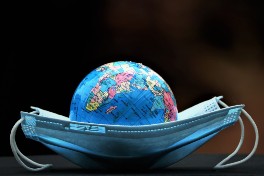
The Development Assistance Committee (DAC) of the Organisation for Economic Cooperation and Development (OECD) released its early figures for development assistance spending across donor countries in 2020. These figures offer the first tangible evidence of the global pandemic’s impact on EU development aid spending. In absolute terms, EU 2020 aid increased by 7.8% (72.7 billion USD) compared to 2019. However, this rise is mainly the result of a fall in Gross National Income (GNI) prompted by the global pandemic. For the nineteen DAC EU Member States, this represented 0.5% of their ODA/GNI ratio – still far below the longstanding international commitment of 0.7%. The EU institutions’ ODA rose by 25.4% in real terms.
What does this mean?
It is a good thing that EU institutions mobilised additional EU developent assistance. But they are still very far from the level of development financing required. And especially so if you think of the money needed to mitigate the social and economic impact of COVID-19, particularly on women and girls.
Only four EU countries fulfilled or exceeded their commitments on development assistance in 2020: Denmark, Germany, Luxembourg and Sweden. And this in a year when – for the first time since 1998 – the global poverty rate has increased. An estimated 150 million additional people will be pushed into extreme poverty by the end of 2021, living on less than 1.90 USD per day. Woman and girls, employed in the lower paid sectors, will feel the economic impact the most. With less than a decade to reach the Sustainable Development Goals, the EU Member States simply must step up to meet their collective commitment of 0.7% ODA/GNI.
The quantity of EU ODA is one thing, but its quality is yet another. NGO’s need to keep checking how much of this money actually reached the most marginalised people and countries. Given the interconnected crises such as rising inequalities, climate change, growing conflicts and fragilities, it’s crucial that all EU-funded programmes and projects should also be screened to ensure they are in line with Leave No One Behind and gender equality principles. More and better EU ODA, which is both life-saving and puts the reduction of inequalities front and centre, is needed more than ever.
It is a good thing that EU institutions mobilised additional EU developent assistance. But they are still very far from the level of development financing required. And especially so if you think of the money needed to mitigate the social and economic impact of COVID-19, particularly on women and girls.
Only four EU countries fulfilled or exceeded their commitments on development assistance in 2020: Denmark, Germany, Luxembourg and Sweden. And this in a year when – for the first time since 1998 – the global poverty rate has increased. An estimated 150 million additional people will be pushed into extreme poverty by the end of 2021, living on less than 1.90 USD per day. Woman and girls, employed in the lower paid sectors, will feel the economic impact the most. With less than a decade to reach the Sustainable Development Goals, the EU Member States simply must step up to meet their collective commitment of 0.7% ODA/GNI.
The quantity of EU ODA is one thing, but its quality is yet another. NGO’s need to keep checking how much of this money actually reached the most marginalised people and countries. Given the interconnected crises such as rising inequalities, climate change, growing conflicts and fragilities, it’s crucial that all EU-funded programmes and projects should also be screened to ensure they are in line with Leave No One Behind and gender equality principles. More and better EU ODA, which is both life-saving and puts the reduction of inequalities front and centre, is needed more than ever.

 RSS Feed
RSS Feed